Tech
How Much Does it Cost to Own and Operate a Skid Steer?
Published
3 years agoon
By
admin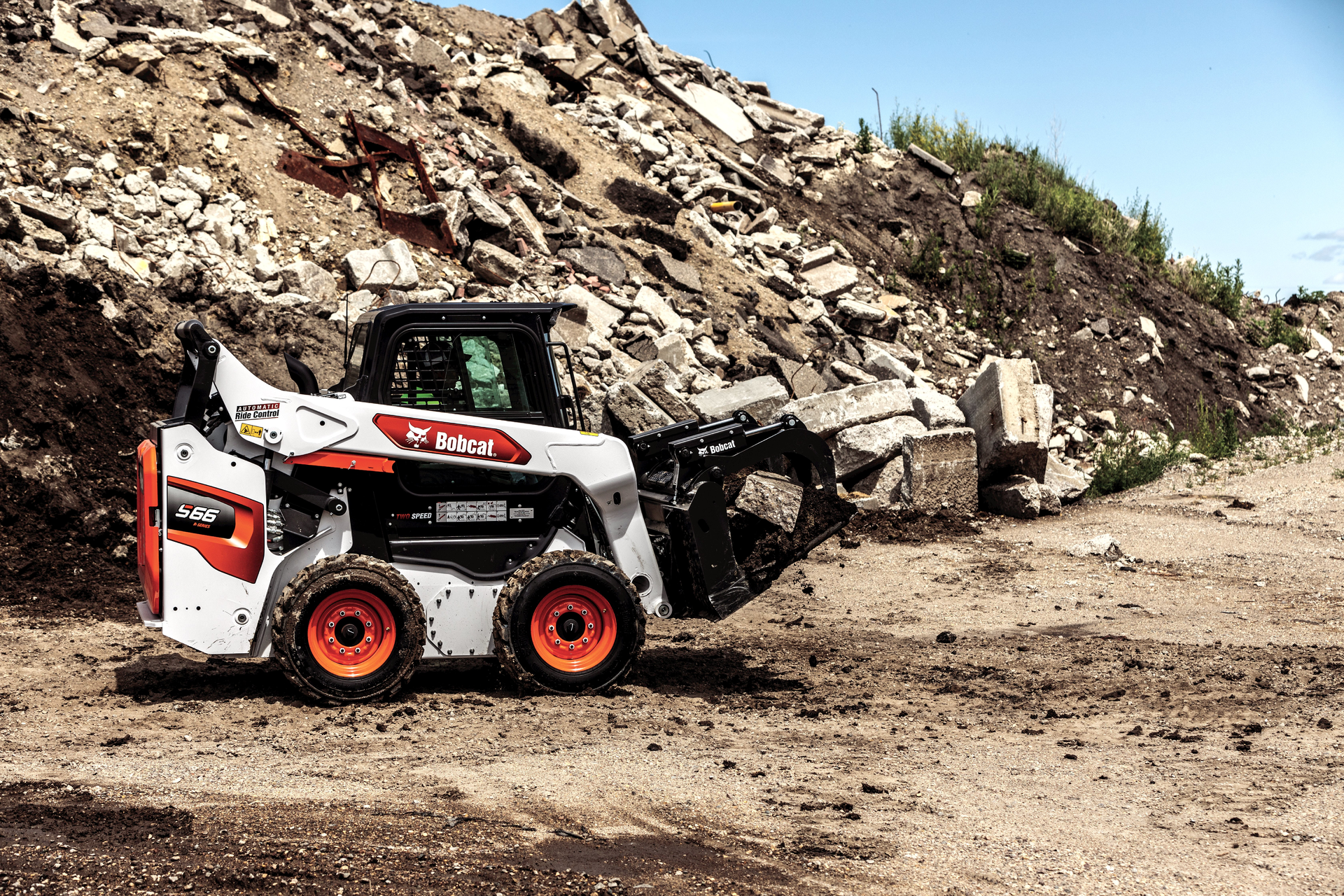
What goes into calculating the owning and operating costs of a skid steer loader?
We’ll look at all the different factors that go into answering that question, but know this will not be a plug-and-play discussion. There are many variables that surround each machine purchase, and the end result can differ significantly from owner to owner. Such variables include machine options, application severity, how long you intend to keep the machine, interest rates and local labor and fuel costs.
In the end, you’re basically looking for a solid estimate of your skid steer O&O costs. You can use it to evaluate your anticipated hourly costs over the life of a machine you’re interested in buying.
This will also give you a baseline number and help you evaluate whether a certain machine met, exceeded or failed to meet expectations. It will also help you hone your evaluation, especially if unexpected costs cropped up, for the next skid steer you buy.
To give us a baseline for this discussion, we’ll be looking at the 74-horsepower Bobcat S66 R-Series skid steer. The 2,400-pound rated- operating-capacity machine weighs 7,154 pounds and has a 17.6-gpm standard and 26.9-gpm high-flow hydraulic system. Joystick controls are optional.
At the time of this writing, a standard, no bells-and-whistles version of the S66 cost around $50,008.74, says Tyler Zima, Bobcat’s senior product specialist, loaders. Zima can cite that exact price because Bobcat now lists its retail prices on its website.
The unit sits smack in the center of Bobcat’s skid steer lineup, which ranges from the 760-pound rated-operating-capacity S70 to the 3,950-pound ROC S850. Bobcat is currently converting its skid steers from the M Series to its R series.
The S66 is the only Bobcat skid steer with standard two-speed, prompted by high demand for the feature from customers, Zima says.
Most customers will equip their unit with one or several available options, which will of course add to the upfront purchase price. To go with a fully outfitted S66, including the Bob-tach attachment system, ride control, heated/air-conditioned cab, selectable joystick controls and several other options can add up to $15,000 on the S66.
“Most customers are going to put on about $7,000 worth of options,” Zima says.
Selectable joystick controls are a popular choice and an upgrade from the standard hand-and-foot controls. “They give operators extra functionality, and you can set how fast the machine reacts to you,” Zima says. Using fingertip controls, you can control several machine functions without letting go of the joysticks, and easily swap between ISO and H-Pattern.
The Power Bob-Tach system, which allows users to quickly swap non-hydraulic attachments without leaving the operator’s seat, is also high on buyers’ lists. Beyond the typical bucket and forks, popular skid steer attachments include grapples.Doosan Bobcat
Beyond the typical bucket and forks, popular skid steer attachments include grapples.Doosan Bobcat
New to R-Series skid steers and compact track loaders is Features on Demand. By enabling this option, users can choose to turn on the following whenever they want: high-flow hydraulics, automatic ride control, dual-direction bucket positioning, reversing fan and auto-throttle. “It gives them the flexibility to add each of these features down the road instead of up front,” Zima explains. “They can also opt for a 20-hour demo. You’re not paying as much as you would if you chose to add them later.”
To help you plug in your own numbers, we’ve added a calculator that you can download here. This calculator is designed to give you a beginning estimate of the O&O costs for the machine you’re considering. To do a deeper dive, we recommend you talk with your dealer.
Expected life
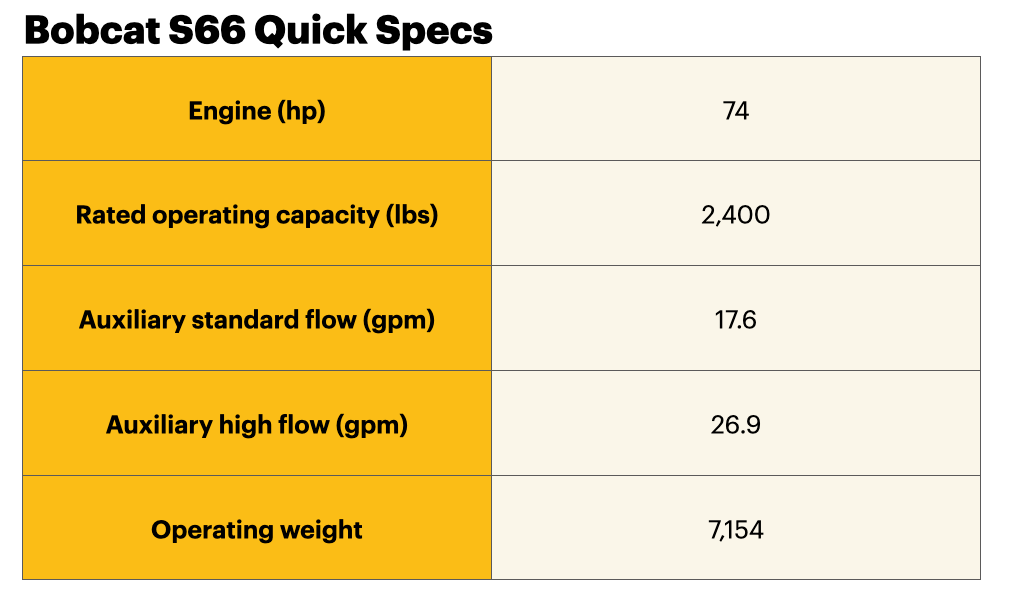 The total number of hours you anticipate owning a machine is a key multiplier, one that you will use to determine your estimated hourly costs throughout your calculations.
The total number of hours you anticipate owning a machine is a key multiplier, one that you will use to determine your estimated hourly costs throughout your calculations.
This will, of course, depend on your application and use. Some owners ride a machine hard, and the wear and tear will impact the machine’s expected life.
High-vibration asphalt and concrete applications, where customers are running breakers or planers, are heavy-duty jobs for skid steers. “You’re wearing out your bushings and pins, and your lift arms get a lot of abuse in those types of applications,” Zima says. Also on the severe-duty list are forestry and paper recycling applications.
“If you look at our typical construction customer, they are putting on about 800 hours a year,” Zima says. Add around 200-plus hours a year for a more severe application. (This includes Bobcat’s entire skid steer range, not just the S66.)
Also consider that certain geographical locations can be tough on machines, such as Texas heat, Florida sand or New England rock.
Incoming telematics data, however, places around 80% of Bobcat’s customers (which include several non-construction categories such as agriculture and hobby farmers) using skid steers between 100 to 500 hours per year.
While lighter-use customers can keep machines for five to 10 years, contractors typically trade in their machines at the two- to three-year mark.
Another trade-in consideration is the end of the new-machine warranty. Bobcat’s standard warranty is 2,000 hours; an extended warranty goes to 3,000 hours. Many customers opt to use that as a prompt to get the residual value out of the machine.
Residual values vary according to the age and condition of the trade-in. A typical 2,000- to 3,000-hour machine will probably net around 50% of its original value; for a machine that’s around the 4,000- to 5,000-hour mark, expect around 40% of its original sales price.
An owner who really babies a machine – and has the records to prove it – can perhaps get as high as 70% of the machine’s original price.
Now, Bobcat is offering [detail current financing deal]. Of course, rates change with market conditions, but financing rates for any machine you’re considering can be easily found either via the dealer or on that brand’s website.
We’re also going to assume that you’re financing a new machine, instead of using a lease or a rental purchase option. Both of those avenues will add different factors to the equation and are best discussed with your dealer.
You’ll also need to input your local taxes and insurance costs into your owning costs. Be sure to use our cost calculator to calculate all of your costs.
Residual value
Before we move on to operating costs, we have another number to add to the owning side of the equation: how much of the original price you paid you can expect at trade-in or resale. This will be subtracted from your overall owning costs.
You’ll need to factor in two things you already know: how many hours you will put on the machine and how severe your applications will be. The more hours on a machine and the harder it’s run will have an impact on its resale value.
The opposite is also true; lower-hour machines working in less demanding conditions typically fetch higher resale prices.
It’s also good to know how the brand you’re considering fares in the resale market. Auction and resale prices have many variables, including manufacturer, machine model, hours and machine condition.
There’s another important factor, one that you won’t be able to put into this equation. When it comes time for resale, keep your eye on what the machine is fetching in the rolling 90-day retail and auction markets. Timing is sometimes everything; your dealer should be able to give valuable insight as this time approaches.
Past experience and maintenance reputation can also factor into this equation. If you’ve purchased and traded-in or sold a similar-sized skid steer before, how much of the original price did you receive at resale? A reputation for keeping your machines in tip-top shape also could put money in your pocket at resale.
Calculating owning costs
Now it’s time to do some math. Using our cost calculator, add up the cost of the basic machine and any add-ons, such as attachments, extended warrantees, service agreements, additional machine features, technology, etc. Then add in your total financing costs, insurance and taxes.
Now you’ll get an idea of how important your residual value – the amount you expect to get at resale – is in this calculation. Subtract your residual value from your operating cost total. The result is your expected owning cost for the machine under consideration. To get your owning cost per hour, divide this total by the number of hours you expect to keep the machine.
Keep that number to the side for now.
Operating costs
Now let’s look at the operating cost side of the equation, or what it will take to successfully maintain and operate a machine until it’s time to dispose of it.
Two constants in any machine operating cost calculation will be labor and fuel.
Labor costs are a critical part of this. You’ll already have a good handle on those: how much an operator costs in your area in terms of pay and benefits. Per-hour technician costs also need to be factored in, whether you have an in-house person or rely on your dealer.
Another thing to consider: larger skid steers will have engines above 74 horsepower and will require diesel exhaust fluid as part of their emissions reduction system. So we’ve included a line for DEF in our cost calculator.
The cost of diesel, now on the rise, will be another number. Again, you should have a good cost basis for this since it’s something you deal with on a regular basis.
Your maintenance schedule – oil and filter changes and other preventive maintenance items – is spelled out in your operator’s manual. For example, the recommended engine oil change interval on the S66 is now 750 hours; Bobcat eliminated the 50-hour oil change on its previous M-Series skid steers.
Bobcat says R-Series engine and hydraulic oil change intervals have increased because of component, system, filter and oil improvements. Fuel filters now have sensors that will notify the operator when they need to be changed.
At the time of this writing, Bobcat said operating an S66 under average use conditions will cost $9.11 per hour. Typical maintenance costs (excluding labor) include:
- Average once-a-year oil change (including filter) will cost $75-$80.
- R-Series hydraulic oil and filters are changed at 1,000 hours or every 12 months, costing $115-$120 per change.
- Fuel filters are around $75 to $80 and pre-filters, changed at 1,000 hours, are around $20.
- Budget $150 per year for grease.
“I can’t stress enough that doing the daily and scheduled maintenance is critical because that’s going to lead to a longer life on the machine,” Zima says. That also, of course, plays into the residual value at trade-in or sale.
Buckets should last the first life of the machine, or up to 3,000 hours. If your applications are more severe, you may need to replace the cutting edge, which will run $250 to $300. If you use teeth, their replacement typically is around the same amount.
Other attachments such as planers and forestry heads require daily maintenance and replacement of wear teeth and parts. If you’re going to own more specialized attachments, have a good idea of the associated costs to maintain them.
A set of four Bobcat heavy-duty tires will cost about $1,250. Users typically get 500 to 800 hours per tire set.
Fuel costs also need to be factored in.
“There shouldn’t be a lot of repair costs in the first 3,000 hours,” Zima says. Engine, drivetrain and lift arms are designed to last 5,000 hours and out before replacement. As mentioned previously, certain applications such as demolition may put more wear on a machine.
If you’re buying a used machine with about 4,000 hours, however, you’ll need to start factoring in some component replacements. Your dealer will have a good handle on replacements and repairs likely to occur and how much they will cost.
You may also opt to hand over all of your PM costs on a new machine to your dealer, using a customer service agreement. “You then know throughout the life of the machine what your maintenance-related operating costs will be,” Zima says.
Telematics hand up
Today’s telematics give you a pulse on what’s happing with the machine, giving you alerts to items such as excessive idling that can impact your residual value when it comes time for disposal. Most compact machine OEMs now have standard telematics and offer a free subscription to a certain level of information for a set time.
Bobcat, for example, offers skid-steer buyers a free telematics “health and security basics” three-year subscription, one that goes with the machine if it’s sold or traded before the subscription is up.
Customers also can buy additional telematics packages. Bobcat says most customers tie telematics subscriptions to the warranty period.
Final calculations
Add up your anticipated owning costs, including labor, fuel, repair and PM costs, the number of tire replacements, lubricants, wear parts and consumables. (Again, be sure to check out our cost calculator.) Divide this total by the number of hours you expect to own the machine to get a cost per hour.
Add the owning cost per hour that you calculated earlier with the operating cost per hour. This will be your total O&O cost per hour.
You may like
-


Hyundai to Reenter Compact Market at Conexpo 2023
-


Doosan Changes Its Brand Name to Develon
-
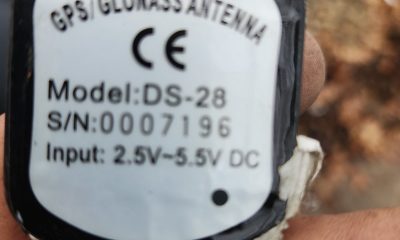

Contractor tracks down stolen skid steer, finds theft ring
-


Top 40 construction equipment stories of 2022
-


Kubota unveils UTVs for 2023 with new colors, accessories
-
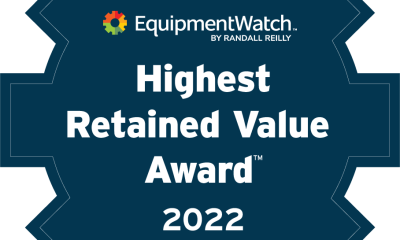

Finalists named for EquipmentWatch Highest Retained Value Awards
Tech
Cat’s Next Generation 255 and 265 Get More Power, Lift Height
Published
7 months agoon
October 10, 2023By
admin
Caterpillar is bidding farewell to its 259D3, 279D3 and 289D3 compact track loaders with the introduction of its new, next-generation 255 and 266 models.
The completely redesigned models debuted at media and customer events at Caterpillar’s Edwards, Illinois, Demonstration and Learning Center last week. The 255 and 265 offer improved engine performance, more lift height, a roomier cab and more standard technology than their predecessors.
“We kept the DNA of the D3 series while reimagining the possibilities of loader performance using voice of customer feedback to lead the way,” says Trevor Chase, product application specialist for Caterpillar. “Both next-generation models leverage the many benefits offered by the vertical lift design. The new Cat 255 replaces the 259D3, while the 265 replaces both the 279D3 and 289D3 machines.”
The CTLs are the last of Cat’s building and construction products to get the next-generation treatment and simplified nomenclature. The first number (2) represents the skid steer loader and compact track loader machine family; the middle number (5 or 6) designates the machine size; and the ending number (5) is the compact track loader identifier. Skid steers will be identified by a 0 end number. Additional new models will roll out in the coming months, the company says.
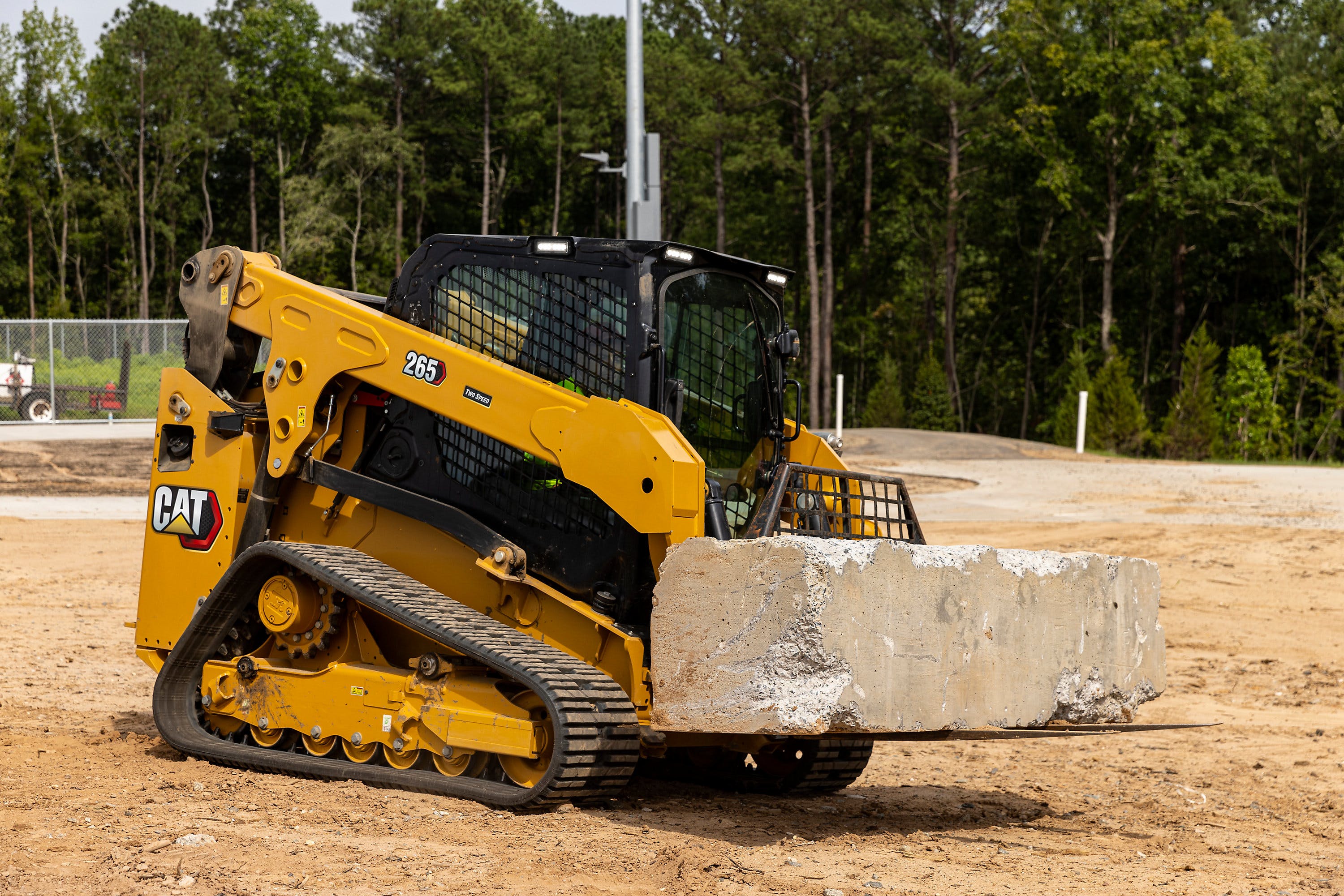 CaterpillarMore power and torque
CaterpillarMore power and torque
Cat equipped the 255 with a C2.8T engine and the 265 with a C2.8TA engine, both at 74 horsepower. This gives the new machines a significant boost in torque – 13% for the 255 and 43% for the 256 – over their D3-Series predecessors. The engine and cooling package are mounted lower in the frame for added visibility out the rear window and stability while lifting heavy loads.
Customers attest that the added lift height makes truck loading easier. The 255 offers 10 feet 4 inches of lift height, while the 265 can reach 11 feet high.
“The lift height has made a big difference when loading trucks,” said Derrick Roger, owner of Coast to Coast Lawnscapes, who spent several months testing the 255. “You can get on top of that truck now and empty the bucket; whereas, before you would have to shake the bucket to try to get the material to fall out.”
The 255 delivers 36% more tilt breakout, 26% higher lift breakout force and a 24% increase in rated operating capacity (ROC). The 265 also delivers 19% higher tilt breakout force and 22% higher lift breakout force.
Standard hydraulic pressure has been increased to 3,500 psi, allowing the 255 and 265 to operate all Cat Smart Attachments with the standard auxiliary hydraulics provided.
If demanding attachments require additional hydraulic flow, customers can have their Cat dealer activate the high flow functionality on the machine or remotely via software update. This makes it possible for the CTLs to hit 30 gallons per minute of flow at the standard system pressure.
A High Flow XPS factory option increases auxiliary hydraulic system pressure to 4,061 psi for both models, while also increasing the hydraulic flow to 30 gallons per minute for the 255 and 34 gallons per minute for the 265.
The torsion suspension undercarriage delivers better operator comfort, track wear and material retention, plus the stiffer design results in smoother graded surfaces, Cat says. A new 12.6-inch bar-tread narrow track option is available on the 255.
A more spacious cab
Cat says it has increased the cab width by 2.75 inches without making the machines wider and the footwell-to-ceiling height by 1.8 inches. The larger cab gives operators an additional 1.5 inches of hip room and 1.1 inches more width between the joysticks.
A range of new mechanical and air-ride suspension seat options are available, including a ventilated and heated seat. A new automatic temperature control allows operators to set a specific temperature. Relocated vents help cool or heat the machine quickly.
The standard package includes the same 5-inch LCD monitor as the D3 Series CTLs, which offers Bluetooth connectivity and functionality for the rearview camera feed, creep, job clock, and maintenance reminders.
Customers can upgrade to a new 8-inch advanced touchscreen monitor, like the display found in Cat’s next-generation mini excavators and small loaders. It delivers advanced radio control and supports the 270-degree multicamera option. The advanced monitor pairs with the advanced joysticks for integrated control of all machine functions and adjustments.
“You can adjust the movement – or the aggressiveness or the conservativeness – of how your tracks and lift arms work through your advanced touchscreen display,” Dante Thomas, skid steer and CTL marketing manager, said. “And you can control of all of your display functions from the advanced joysticks. There are buttons with enter and select functions on those joysticks that you’re able to change any functionality that is possible.”
Cat also redesigned the entry, making the 255 and 265 easier to enter and exit. The cab door can be opened even when the lift arms are not fully lowered to the frame stops. It can be removed without tools in less than one minute.
Advanced technologies
Calling the 255 and 265 “one of the most attachment-friendly machines on the market,” Thomas says both the standard and advanced monitors can run Cat Smart Attachments, such as the dozer and grader blades and backhoe.
“It has attachment recognition that when you plug the attachment into the machine, it recognizes which attachment is connected. It adjusts your joystick pattern, so it gives you intuitive and simple control,” says Thomas.
The available Cat Product Link Elite system tracks machine hours, location, asset utilization, provides fault code details and delivers advanced monitoring and machine health, that is remotely accessible via VisionLink. In addition, Product Link Elite provides remote flash and troubleshooting capabilities and quickly enables the remote activation of the SEA High Flow feature.
[embedded content]
Tech
Quick Data: 2023 Top-Selling Wheel Loaders and Auction Trends
Published
7 months agoon
October 9, 2023By
admin
Quick Data is a snapshot of new and used wheel loader sales trends from Randall Reilly’s EDA equipment financing data, TopBid auction price service and EquipmentWatch market trend reports.
Demand for wheel loaders has softened with new and used financed wheel loader sales down year-over-year from August 1, 2022 to July 31, 2023 according to Randall Reilly’s EDA equipment financing data.
Financed new wheel loader sales dropped 10%, while used financed wheel loader sales fell by 15% compared to the same period last year.
Cat (22.4%), Deere (21.0%) and Komatsu (12.4%) held their positions year-over-year as the top three sellers of new financed wheel loaders. Top models sold included the Deere 544 P-Tier (401), Deere 624 P-Tier (380) and the Komatsu WA270-8 (364).
[Watch: “A Really Solid Machine” – Test Run of Komatsu’s WA475-10 Wheel Loader]
Cat (28.5%) and Deere (22.9%) also snagged the No. 1 and 2 positions for the highest number of financed used units sold, with Case (14.7%) claiming the third spot. On the date we examined the data, the top-selling models were the Case 321F (340), Cat 926M (164) and the Case 621G (159).
During this period, there were more buyers of new loaders in Florida (955) than in any other state. Buyers of new wheel loaders were also prevalent in Texas (893) and Illinois (665). Those states were also top buyers of used financed machines, with 712 units sold in Texas, 413 in Florida, and 412 in Illinois.
EDA data is compiled from state UCC-1 filings on financed construction equipment. EDA continually updates this data as information comes in from each state.
[Related Content: A Rundown of the Latest Wheel Loaders for 2023]
Used Wheel Loader Market
Used wheel loader prices rose 10.1% for the 12-month period from August 1, 2022 to July 31, 2023, according to Randall Reilly’s EquipmentWatch market trend data.
The average price for a used wheel loader was $137,465 in July 2022 compared to $151,367 in July 2023. The average age of used wheel loaders fell slightly during the period, dropping from 8.8 years to 8.3 years.
 EquipmentWatchThe average age and price were calculated on 153,356 resale listings during the period in the EquipmentWatch database.
EquipmentWatchThe average age and price were calculated on 153,356 resale listings during the period in the EquipmentWatch database.
Over the last 12 months, prices for used wheel loaders have in general increased, with the largest gains in October 2022 (6.5%) and February 2023 (2.9%).
EquipmentWatch defines fair market value (FMV) as the monetary value of an asset that can be expected in a transaction with a single seller and single buyer, neither of whom is under any compulsion or time restriction to complete the transaction. FMV for heavy equipment is most closely associated with the private resale market, as opposed to the public auction market.
Wheel Loader Auction Prices
Caterpillar also dominated the auction charts, accounting for 18 of the top 20 wheel loaders sold in terms of price for the 12-month period of September 1, 2022 to August 31, 2023. Deere and Komatsu were the only other manufacturers to appear on the list.
The top auction price spot went to a 2021 Cat 966M with 2,188 hours. It sold for $400,000 at a Ritchie Bros. auction in Orlando, Fla., on September 21, 2022. The second-highest price paid was $315,000 for a 2019 Cat 980M with 7,836 hours at another Ritchie Bros. sale in Atlanta, on December 1, 2022. Rounding out the top three was a 2018 Deere 944K with 8,941 hours. It sold for $290,00 at a J.M. Wood Auction Co. sale in Montgomery, Ala., on March 21, 2023.
In total, there were 358 wheel loaders sold at auctions tracked by Top Bid during this time, with an average price of $99,747. (This does not include any units sold for less than $5,000.)
EDA, Top Bid and EquipmentWatch are owned by Randall Reilly, parent of Equipment World.
[Related Content: Heavy Equipment Auctions Set for Second Half of 2023]
Tech
Video: A closer look at Rokbak articulated dump trucks
Published
7 months agoon
October 6, 2023By
admin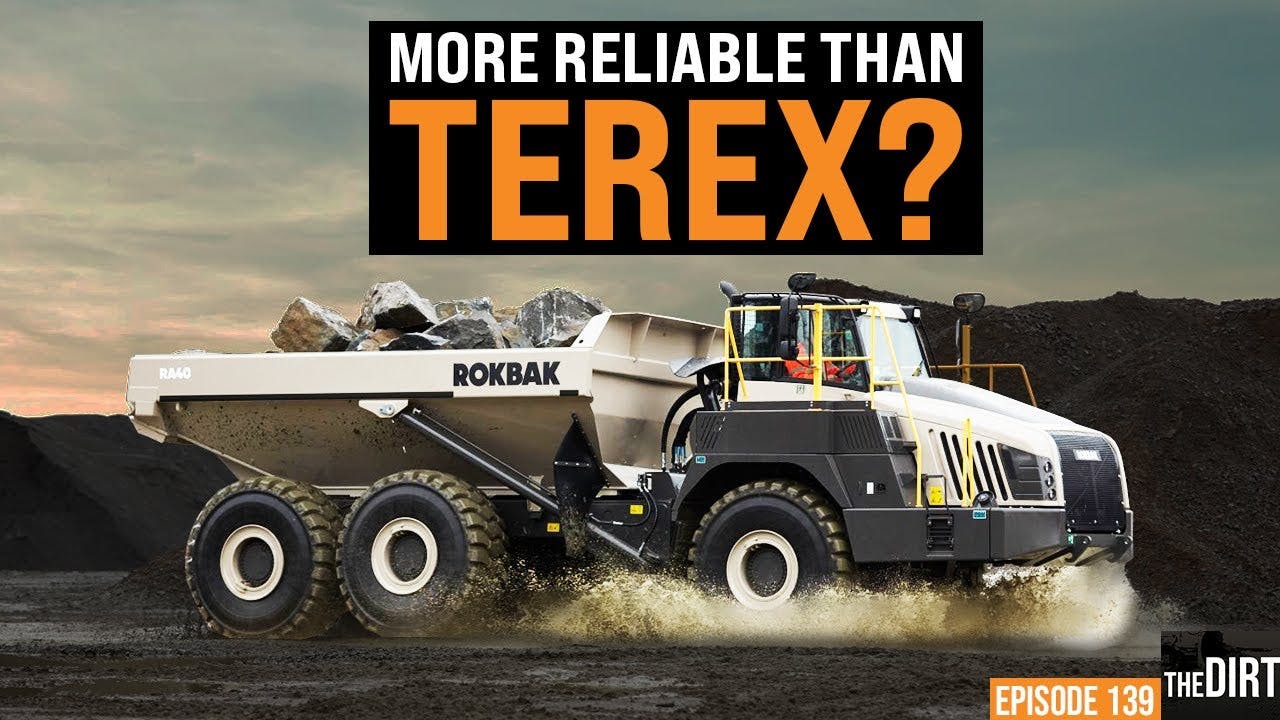

Volvo Construction Equipment bought Terex’s off-road truck line in 2014, and six years later, it rebranded its articulated haulers under the Rokbak name.
On this episode of The Dirt, we hear from Paul Douglas, Volvo vice president of rigid haulers, who explains the differences between the old Terex line and the Rokbak trucks. He also gives a hint at some of the new things coming from Rokbak, including redesigned cabs and replacing the current trucks with new models. There’s also the possibility of a new size truck to hit the market.
Rokbak, as with other construction equipment brands, is working toward a zero-emissions future. On this episode, he explains where the articulated dump truck market is heading in terms of alternative fuel. He adds that customers will see big changes in emissions and engines in the next five years, with the ultimate goal of reaching zero emissions within 10 years.
So to learn more about Rokbak and what the brand has in store for the future, check out this episode of The Dirt.
Equipment World serves up weekly videos on the latest in construction equipment, work trucks and pickup trucks – everything contractors need to get their work done. Subscribe and visit us at equipmentworld.com!
In This Episode:
Trending
-
Jobs2 years ago
Project Manager – Oxford
-
Jobs3 years ago
Commissioning Engineer Security Industry
-
Jobs2 years ago
Airport Retail Sales Assistants
-

 Business5 years ago
Business5 years agoHow To Renovate a Victorian House
-
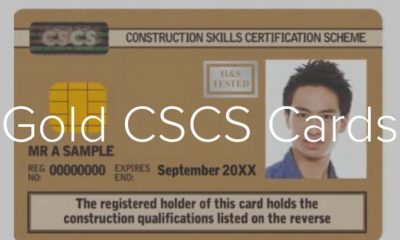
 Business3 years ago
Business3 years agoHow to Get a Gold Supervisory CSCS Card
-
Jobs2 years ago
PASMA labourer in Cirencester
-

 Tech3 years ago
Tech3 years agoIt Won’t Make You the $6 Million Man, But Hilti’s EXO-10 May Save Your Arms, Back
-
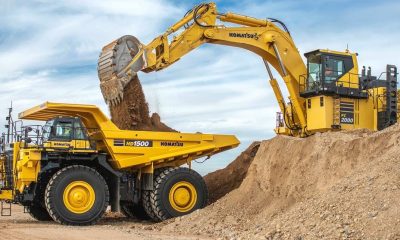
 Tech2 years ago
Tech2 years agoKomatsu launches new HD1500-8E0 rigid-frame dump truck


